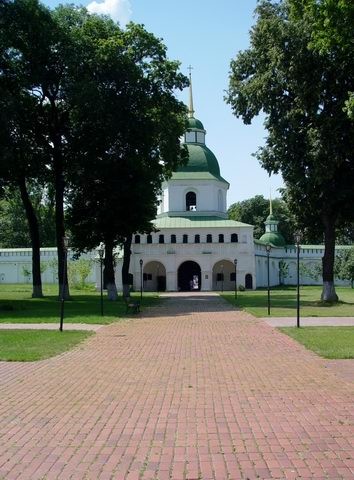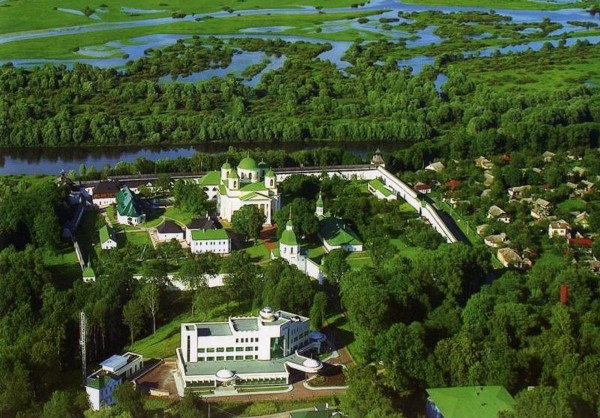Novhorod-Siverskyi Transfiguration Monastery
Novhorod-Siverskyi Transfiguration Monastery (Novhorod-Siverskyi Spaso-Preobrazhenskyi manastyr). (Photo: Transfiguration Monastery complex.) A men's monastery on the bank of the Desna River in southeastern Novhorod-Siverskyi, believed to have been founded in 1033 by Prince Mstyslav Volodymyrovych of Tmutorokan. The first mention of the monastery is found in a 1552 charter of Ivan the Terrible, written when the city was under Muscovite rule. From the first half of the 17th century the monastery was headed by an archimandrite. In 1635, under Polish rule, it was given to the Jesuit order, but it reverted to Orthodoxy following the outbreak of the Cossack-Polish War in 1648. From 1657 to 1672, while serving as the archbishop of Chernihiv, Lazar Baranovych resided at the monastery. He had new buildings erected and established the Novhorod-Siverskyi Press. Baranovych also acquired more properties for the monastery, so that in the 18th century it owned approx 6,000 serfs. From 1785 to 1799 I. Kondratkovsky, the bishop of Novhorod-Siverskyi and Hlukhiv, resided at the monastery. He closed down Pereiaslav College and in its place created a theological seminary at the monastery. The seminary's first rector was Varlaam Shyshatsky. In 1908 the monastery housed 38 monks.
Under Soviet rule the monastery was secularized and transformed into a cultural-historical preserve. Its central attractions are the monastery's second Transfiguration Cathedral, designed in the Classicist style by Giacomo Quarenghi and built with five cupolas in 1791–6; the 16th- to 17th-century cruciform, one-cupola Saints Peter and Paul Church; and the monastery's main gate, with three entrances, arches, and an octagonal bell tower, built in the baroque style in the late 17th century. Many prominent 18th- and 19th-century statesmen and cultural figures (eg, Count O. Rozumovsky, Archbishop Shyshatsky) were buried at the monastery.
Oleksander Ohloblyn
[This article originally appeared in the Encyclopedia of Ukraine, vol. 3 (1993).]
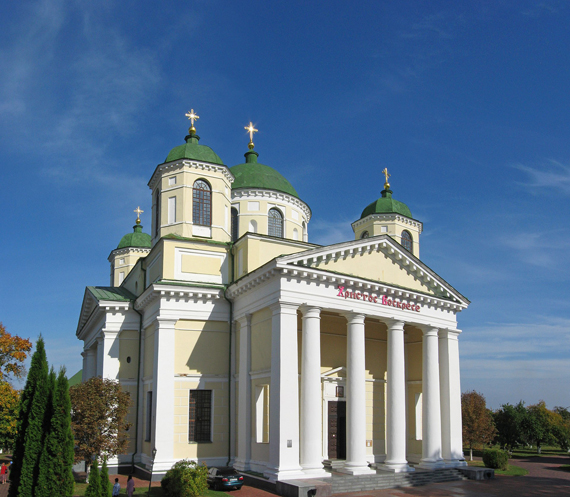
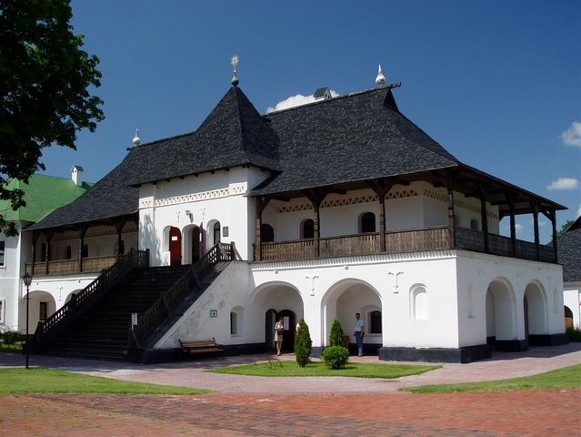
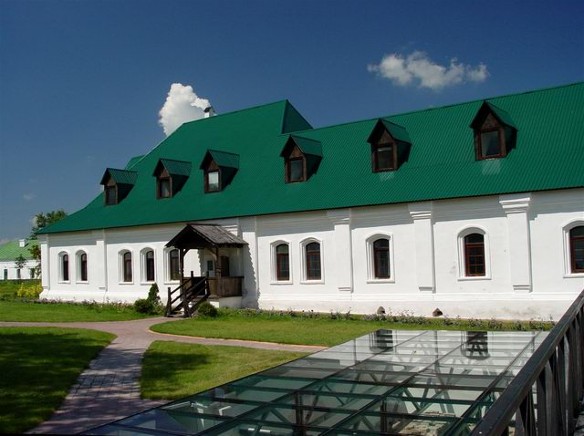
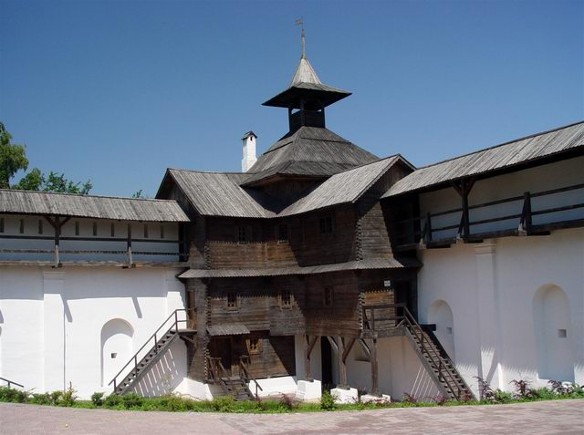
.jpg)
